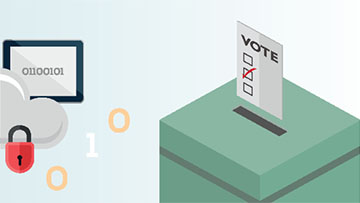Learn about online disinformation
On this page
- What is online disinformation
- How disinformation works
- Who is creating disinformation and why
- Government of Canada efforts to fight disinformation
What is online disinformation
Disinformation is false information that is deliberately intended to mislead. It is sometimes called “fake news”.
Misinformation is false information that is shared without the intention of misleading.
Any type of false information can cause harm.
How disinformation works
Social media algorithms, artificial intelligence and social media influencers all contribute to the spread of disinformation.
Algorithms
Social media platforms are built to capture and hold your attention for as long as possible. They use algorithms to place content in your feed that you are likely to interact with.
The more you engage with false information, the more that kind of content will show up in your feed.
Online disinformation is designed to trigger an emotional response like surprise or anger. This makes people more likely to share it, causing the algorithm to amplify the content even further.
Artificial intelligence
Developments in artificial intelligence (AI) have made it easier to create and spread disinformation.
Deepfakes
Fake images, audio recordings or videos that are created by AI are also known as deepfakes. Deepfakes are becoming more and more realistic, making it harder to tell what is real.
Fake social media profiles
Threat actors use AI to help them spread disinformation using networks of fake social media profiles, or social botnets.
Generative AI can create profile photos for these fake accounts and text that sounds like it was written by a real person.
Social botnets may be responsible for up to 10% of social media posts on hot-button issues.
Influencers
Some social media influencers and commercial firms get paid to spread disinformation.
Social media influencers
Disinformation can be spread by social media influencers who are paid to endorse bogus products and schemes.
Foreign states have also used social media influencers to amplify disinformation for strategic reasons.
Private companies
Some private companies offer services that include spreading disinformation on behalf of a client.
Who is creating disinformation and why
Disinformation is created by different people for different reasons. Next time you find yourself getting sucked into an argument online, ask yourself, who is behind that post and why are they picking this fight?
Foreign states
Disinformation is one of the tools used by foreign states and state-sponsored actors to advance their national interests.
Foreign states use disinformation to:
- generate support for their actions
- suppress criticism
- interfere with other countries’ domestic affairs
- influence public opinion and voter decisions
- discredit people, institutions and credible news sources
- amplify social divisions
- undermine trust in democracy
Sometimes state actors spread disinformation to support a specific agenda, such as the Kremlin’s use of disinformation in the invasion of Ukraine. Other times, the goal is to amplify divisions in our society by stirring up hot-button issues. If enough people react to a post, the disinformation takes on a life of its own.
Individuals and groups
Individuals and groups create disinformation for many reasons, including to promote an ideology or to make money.
Ideological reasons:
- to promote certain beliefs including:
- political ideologies
- extremist views
- conspiracy theories
- hatred and violence
- to discredit people or organizations
- to cast doubt on scientific fact
Financial reasons:
- to promote a bogus product or scheme
- to get you to click on links infected with malware
- to get paid by a client
- to make money from ad views
Ultimately, the original source of any piece of disinformation can be difficult to trace. Even if it starts as foreign disinformation, Canadians may share it not knowing that it’s false.




